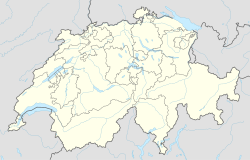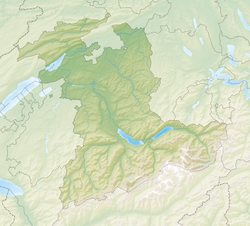Sornetan
| Sornetan | ||
|---|---|---|
| Former municipality of Switzerland | ||

Sornetan village church
|
||
|
||
| Coordinates: 47°17′N 7°13′E / 47.283°N 7.217°ECoordinates: 47°17′N 7°13′E / 47.283°N 7.217°E | ||
| Country | Switzerland | |
| Canton | Bern | |
| District | Jura bernois | |
| Government | ||
| • Mayor | Maire | |
| Area | ||
| • Total | 5.62 km2 (2.17 sq mi) | |
| Elevation | 843 m (2,766 ft) | |
| Population (Dec 2011) | ||
| • Total | 129 | |
| • Density | 23/km2 (59/sq mi) | |
| Postal code | 2716 | |
| SFOS number | 0710 | |
| Surrounded by | Monible, Châtelat, Saicourt, Saules, Souboz, Undervelier | |
| Website |
www SFSO statistics |
|
Sornetan is a municipality in the Jura bernois administrative district in the canton of Bern in Switzerland. It is located in the French-speaking Bernese Jura (Jura Bernois). On 1 January 2015 the former municipalities of Châtelat, Monible, Sornetan and Souboz merged to form the new municipality of Petit-Val.
Sornetan is first mentioned in 1179 as Sornetan. The municipality was formerly known by its German name Sornetal, however, that name is no longer used.
The area around Sornetan was inhabited since antiquity. Some of the earliest finds are scattered items from the Celtic tribes that lived in the area. They were followed by the Romans and then by the Burgundians. A noble family using the Sornetan name appear in historic records from the 12th until the 14th centuries. The village was eventually acquired by the college of canons of Moutier-Grandval Abbey. When the Abbey was suppressed during the Protestant Reformation, Sornetan was placed under the provost of Moutier-Grandval who was under the Prince-Bishop of Basel. After the 1797 French victory and the Treaty of Campo Formio, Sornetan became part of the French Département of Mont-Terrible. Three years later, in 1800 it became part of the Département of Haut-Rhin. After Napoleon's defeat and the Congress of Vienna, Sornetan was assigned to the Canton of Bern in 1815.
...
Wikipedia




